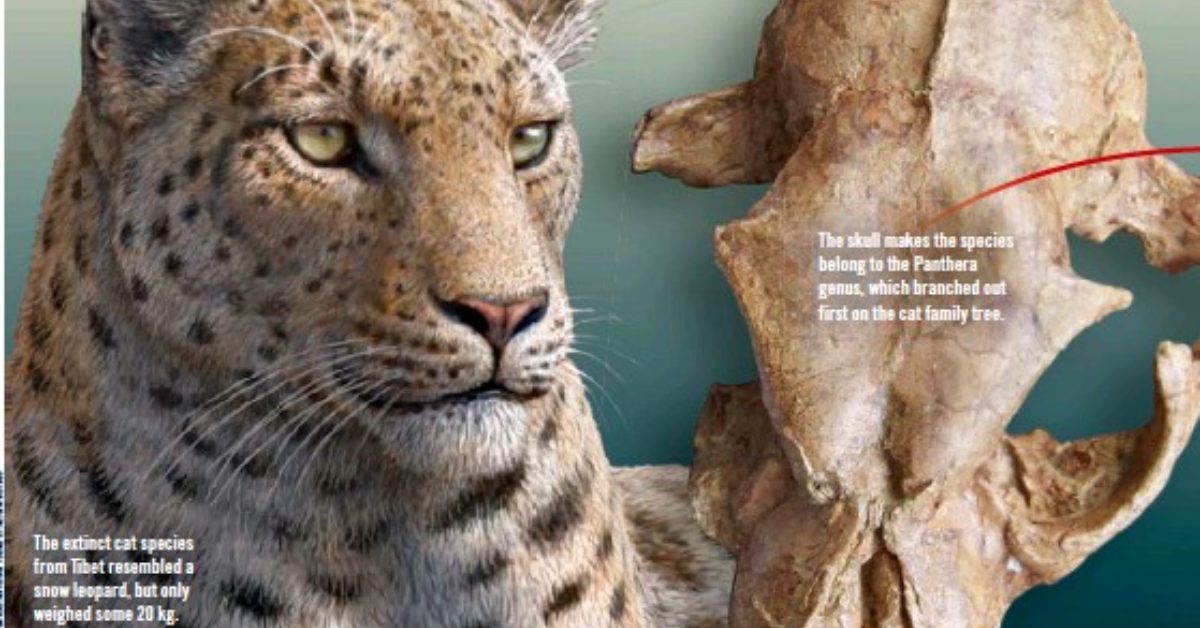
A well-preserved 6 to 4 million-year-old skull of a previously unknown species of prehistoric snow leopard from Tibet is the oldest big cat fossil ever found, according to paleontologists from China, Canada and the United States.

Life reconstruction of Panthera blytheae. Image credit: Mauricio Antón.
“This find suggests that big cats have a deeper evolutionary origin than previously suspected,” said Dr Jack Tseng from the American Museum of Natural History in New York, who is the lead author of a paper reporting the discovery in the Proceedings of the Royal Society B: Biological Sciences.

DNA evidence suggested that the Pantherinae subfamily, including lions, jaguars, tigers, leopards, snow leopards and clouded leopards (so-called big cats), diverged from their nearest evolutionary cousins, Felinae, which included cougars, lynxes and domestic cats, about 6.37 million years ago.
However, the oldest fossils of big cats previously found were 3.6-million-year-old tooth fragments uncovered at Laetoli in Tanzania by Mary Leakey in the 1970s.
The newly found skull fossil is important because it partially fills the gap.
Dr Tseng’s team unearthed it in 2010 while scouting in the remote border region between Pakistan and China, an area that takes a bumpy seven-day car ride to reach from Beijing.

Skull of Panthera blytheae. Image credit: Tseng ZJ et al.
The scientists found more than 100 bones that were likely deposited by a river eroding out of a cliff. There, below the antelope limbs and jaws, was the crushed but largely complete skull of a big cat.
For the past three years, Dr Tseng and his colleagues have used both anatomical and DNA data to determine that the skull does, in fact, represent a new species, named Panthera blytheae.
“The species name, blytheae, honors Blythe, the snow-leopard-loving daughter of Paul and Heather Haaga, who are avid supporters of the Natural History Museum of Los Angeles County.”
Using magnetostratigraphy, the paleontologists were able to estimate the age of the Panthera blytheae‘s skull at between 4.10 and 5.95 million years old.
The discovery not only challenges previous suppositions about the evolution of big cats, it also helps place that evolution in a geographical context.

Biogeographic evolution of big cats. Image credit: Tseng ZJ et al.
Panthera blytheae was found in a region that overlaps the majority of current big cat habitats and suggested that the group evolved in central Asia and spread outward.
In addition, recent studies suggested that the genus Panthera did not split from genus Neofelis (clouded leopards) until 3.72 million years ago – which the new find disproves.